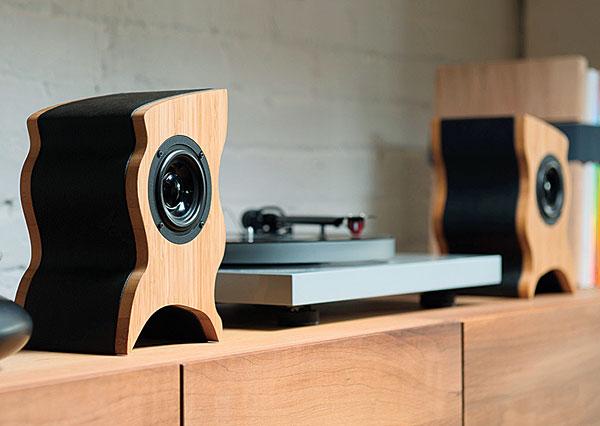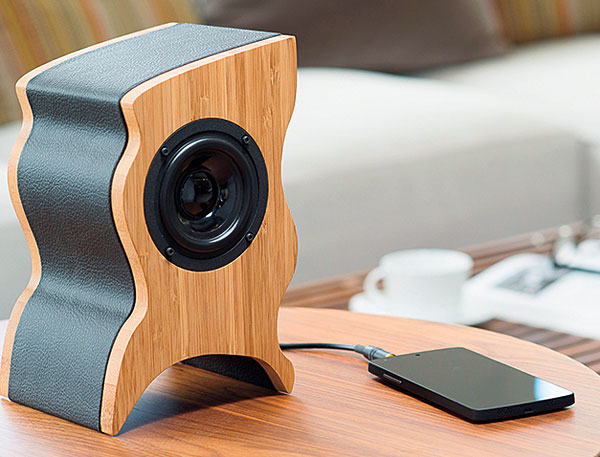Desktop Deity: Serene Audio Talisman Speaker

“I was basically looking for an audiophile-worthy setup for my desk, and all computer speakers fell short of my expectations,” he explains. “The first couple speakers I built didn’t meet all my expectations, so they ended up as gifts for less discerning listeners. But then I came across what is now the ancestor of the Talisman we sell today. I was so impressed with it, I decided to share it with the world, and that is how Serene Audio was born.” The company launched its first products in January 2011.
On the forums, Rezaei lists “making weird speakers” as one of his interests, but I like to think of the Talismans as exotic. “The design was mainly an aesthetic choice,” he says. “I wanted something that would stand out but give you joy when you look at it.” The speakers are hand-crafted in Serene’s workshop in Vancouver (British Columbia) using solid bamboo, leather, and brass “for a classy look that blends well in an office environment.”

The Talisman is not very big at all. From top to bottom, it stands a mere 8 inches tall and is only 5 inches wide and 6 inches deep. It uses a single high-quality driver that sacrifices sensitivity for very low-level distortion, which as Rezaei explains is not an issue because the amplifier is designed to provide ample power “without breaking a sweat.” If measurements are your thing, Serene provides distortion plots at sereneaudio.com, including one that compares its driver with the one B&W uses in its MM-1 speaker.
The amplifier is an in-house design that is directly coupled (as in no crossover) to the driver. At the core of the amp is a 24-bit DSP chip, the use of which Rezaei goes out of his way to explain in a Note to Audio Purists on the company Website: “We have carefully used DSP only to help the speakers stay true to the original mix, and not to try to ‘improve’ or ‘enhance’ it.” Bass response at the –3-decibel point is rated as a very respectable 65 hertz thanks to the synergy between amp and driver. Want to go lower? No problem: An auto-detecting subwoofer output is provided.”
So how much does this sonic gem cost? Would you believe $395 a pair with free shipping and a 30-day return policy?





























































